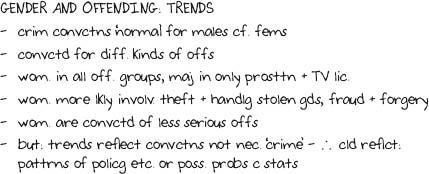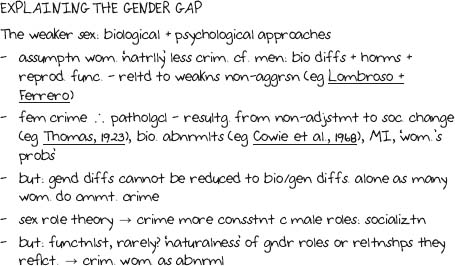6 Extracting a summary
In developing short notes you are already beginning to extract key ideas from the text. To assist you further in this you might also find it helpful to bring the points you have highlighted and/or made short notes about together. This involves the use of link sentences and words, perhaps even the addition of short quotes taken from the text directly, and examples or additional words of explanation. In this way your notes build up into a summary which you can use more easily.
Activity 8
Have a go yourself using the short notes that you made from the Croall extract.You will find our feedback and comments noted in the "Now read the discussion" link. Try not to read these until you have completed the activity.
Discussion
Our short notes for the first part of the extract are reproduced below and any additional information, for example link sentences and words as well as quoted material that we added to make a summary, are underlined. Below each set of points we have included a translation of our notes so that you can understand them.
Translation:
assumed men commit more crime than women: based on conviction rates
do they? how is this explained?
Translation:
criminal convictions are more normal for males than females
men and women are convicted of different types of offences
women in all offence groups but represent the majority only regarding prostitution and TV licence non-payment
women are more likely to be involved in theft/handling stolen goods/ fraud/forgery
women are convicted for less serious offences
but: trends reflect conviction rates as opposed to crime rates – therefore they could reflect patterns of policing or problems with statistical data
Translation:
assumes women are naturally less criminal than men as a result of biological differences, hormones and reproductive function being related to non-aggression
female crime is therefore seen as pathological – resulting from a non- adjustment to social change, biological abnormalities, mental illness and ‘women's problems’
but: gender differences cannot be reduced to biological/genetic differences alone as many women do commit crime
sex role theory claims that crime is more consistent with male roles: role of socialization
but this is functionalist: it rarely questions the naturalness of gender roles or the relationships they reflect, thus giving rise to claims that criminal women are abnormal
Translation:
sociological approaches increase the focus on class, social deprivation and age
women remain largely invisible
the anomie paradigm, subcultural theory, labelling theory, and critical/ radical approaches all neglected the gender dimension
control theory has potential but accepts stereotypical notions regarding gender
As you can see we made a note of the bibliographical details of the extract (from the list of references on page 20) at the top of our notes. This is crucial if you want to use notes at a later stage, perhaps for writing assignments, as it enables you to acknowledge the source of these ideas and arguments (see Section 8 - page 15 of this course - for more on referencing, acknowledging sources and avoiding plagiarism). We also thought it might be useful to note down some of the proponents of particular perspectives. This means that if we need to write about these ideas we can attach them to relevant ‘owners’. This in turn enables us to (a) stand back from different viewpoints and subject them to critical scrutiny, and (b) present a whole range of different and competing ideas and viewpoints without appearing to contradict ourselves. We can simply represent these views as different takes on the same issue. No quotes ‘jumped out’ at us, so we did not include any this time, but we did use our highlighted subheadings which proved to be a useful way of organizing our notes.
So far we have looked at how to highlight key ideas in the text itself and how to use the highlighted bits to create short notes and summaries. Identifying and extracting important points will take you a long way, but this is not yet really active reading. You are making judgements about what is important to select, but you are not yet actively working on what you have read. The next stage, then, is to begin to take the ideas into your thoughts, make your own sense of them, and begin to ‘talk to’ what you are reading: check you understand the main points; see how they relate to your own experience; think up other examples that may illustrate them; see how they stand up to questioning; and sometimes query them or begin to put forward criticisms. This is about reading and thinking.




